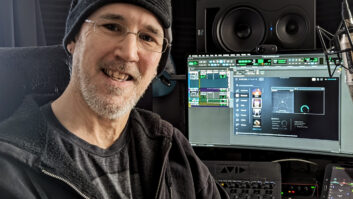We all have seminal moments.
Moments of such significance that they are so permanently etched in our minds that, when they are recalled, we almost relive them to the last detail. Most are personal; when we got engaged, the birth of our first child, the big hit that won the game, an unexpected death. And then there is the other kind, the kind that we share with others, but still is very much individualized inside us.
On December 7, 1941, a little after 1 p.m., I was lying on the living room rug in our apartment just north of New York City when a radio bulletin announced the attack on Pearl Harbor.
I was on 38th Street between Madison and Fifth Avenues walking back from lunch when the elevator operator stepped out of our building to tell me President Kennedy had been shot.
I was on Park Avenue at 23rd Street passing the window of a small consumer electronics store when I saw the replay of the Challenger explosion on a TV set in the window.
On September 11, 2001, at a little after 9 a.m., I was on the second day of a visit to Cape Cod when I turned on the TV and caught what I truly believed was a destructive moment in some sci-fi disaster movie. All that was missing was Godzilla or Mothra stomping over the World Trade Center. Of course I quickly learned the horrible truth.
It was just 16 months since my retirement from active duty at TWICE, and as I watched the unfolding scene on TV I was thankful I was no longer working in the office. My window looked out at the WTC and I don’t know if I would have had the strength to watch, or conversely, the strength to turn away. Either action would have required courage.
I can’t tell you how proud I was of Steve Smith, John Laposky and the rest of the TWICE crew when the September 17 issue arrived. I know that they witnessed the horror from the 11th floor windows of the TWICE offices and I know that they felt the same revulsion as the rest of us, but were getting their view first-hand. Even so, in short order they were back doing what all of us has to do, they got to work.
You know, what we do is trade journalism. We aren’t the New York Times or Newsweek. Life and death, world-shaking events, they aren’t our beat. But this one, which took place virtually in TWICE’s backyard, couldn’t be ignored. What the TWICE crew did was turn out the perfect cover, and the perfect coverage for a publication such as ours. And Steve’s editorial, accompanied by John’s extraordinary photo, was a perfect cap for the issue.
As historic disasters go, this one was unique in that it involved high-tech CE, which made it more personal, and global, than any other. The wide use of cell phones by those caught in the tragedy made this a most poignant happening. It is beyond normal human experience to receive a phone call from a loved one trapped in a burning building or held captive in a doomed airliner. I wonder what an appropriate reaction should be. Should the recipient be comforted by the fact that there was a last contact or shattered by the experience?
And of course, on the fourth airliner, the one that went down in Pennsylvania, it was the phone that alerted the passengers to the fate planned by the hijackers and caused the revolt that, in the end, spared the country yet another disaster.
Satellite made the holocaust that was the WTC attack visible to people around the world, live, in color and in real time. Yes, we got the Gulf War and the attacks on Baghdad on live TV. But this was very different in its pure horror. Not since the air raids of World War II has there been anything even approaching the scope of this malicious assault on civilians. Television brought home to people of all nations the stark image of what happens when the madmen behind terrorism are allowed free rein.
We are getting worldwide support today because, and only because, people saw with their own eyes that what happened here can happen, and probably will happen again, if they don’t join with us to stamp out the threat.
As a final note, Wal-Mart, most of whose 3,200 stores are in suburban and rural locations, reported that its computerized sales tracking service showed that right after the attacks on the WTC and Pentagon, its shoppers exhibited a strong bunker mentality. It said sales of gasoline cans jumped nearly 900 percent, and that there was a massive surge in demand for firearms and ammunition.
On the other hand, it completely sold out of American flags and experienced a big jump in demand for TV sets.













